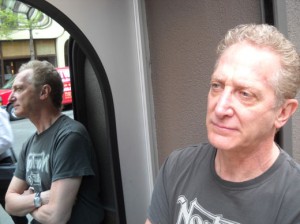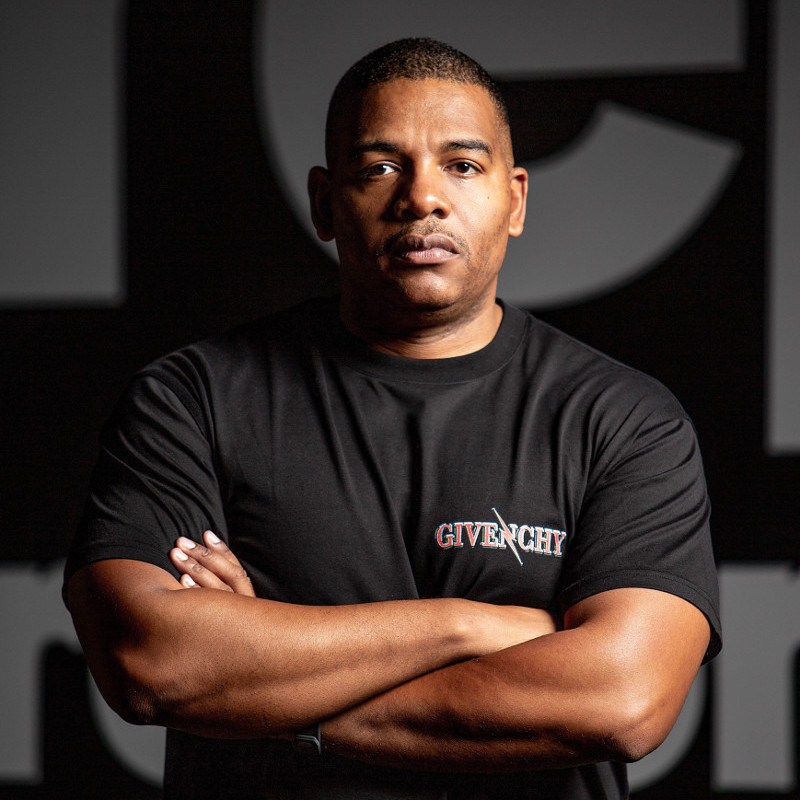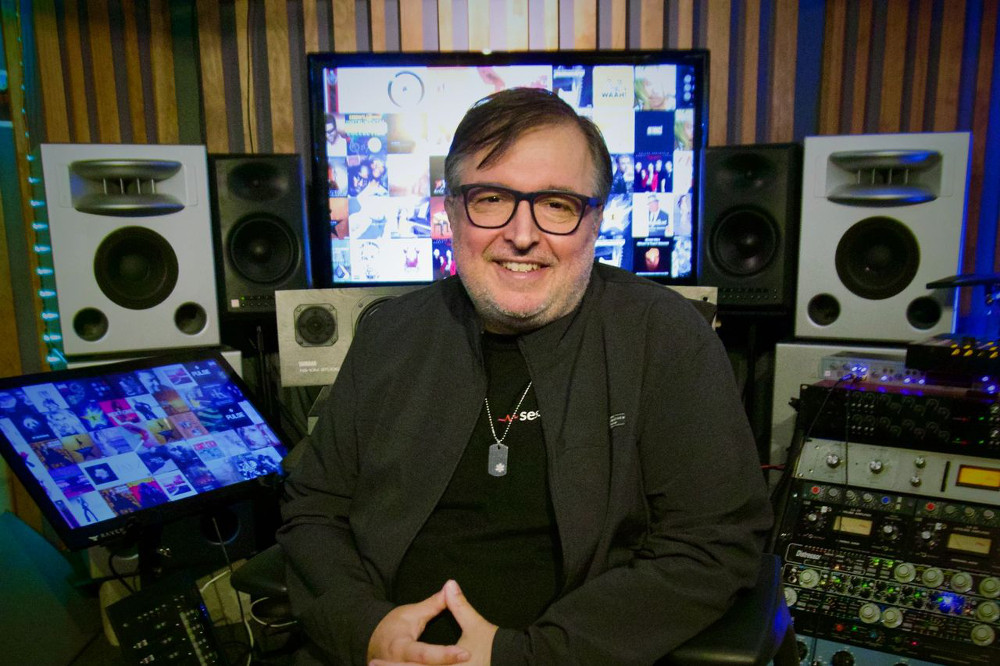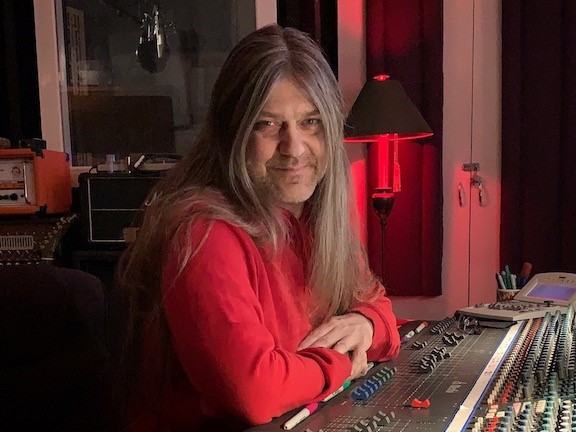Taking on Studio Myths: Vocal Mixing Tips from Michael Brauer, Duro, Rich Keller, and AJ Tissian
Why did I write this?
Recently I read a thread online regarding vocal processing, and unfortunately several disturbing trends evolved in that thread. Where did it go wrong?
#1) The idea that anyone had the one-size fits all Vocal Chain of Doom, guaranteed and essential to the success of the mix.
#2) The supposition that this is how the pros must do it.
Personally, I have my go-to gear and signal path, but each vocal is certainly its own animal. I saw this as a perfect opportunity for me to speak to pro mixers about their thoughts on vocal treatments in the mix and share their insights with you.
I wanted to get the viewpoint of multiple mixers, so I spoke to a platinum-plated panel: Michael Brauer (Coldplay, John Mayer), Ken “Duro” Ifill (Jay-Z, Mary J. Blige), Rich Keller (DMX, Nipsey Hussle) and A.J. Tissian (Saint Paul and the Broken Bones, Xeno & Oaklander) to get a wide range of experiences for you to draw from. Each of the mixers I spoke with have their own approach, but often share certain perspectives.
The Conversation: Listening Before the Mix
One might logically first ask, “What are you listening for in the vocal before you even consider gear?” And that’s exactly what I did! The answers might surprise you.
Michael Brauer: “Initially I’m just reacting to the whole track. More reaction, with analysis coming later. The first thing is to ask for is notes or if the artist can be present, but (the artist’s presence) doesn’t happen much anymore.
“I try to make it more of the artist’s vision, but improved. I listen for how the vocal should be presented among the key elements of the song. “
“The mix is about feel, as simple and powerful as possible. Start with what is strong and listen for how the vocal should be presented among the key elements. You should resolve complicated sections of the mix. If, say, the chorus is big I might start the mix with that.”
Rich Keller: “I often get mixes that the artist is already liking but they want it polished, so I look to see what’s working —and what should I change to get them where they want to be? For those mixes it’s not re-imagining their soundscape, but cleaning it up. When it’s from scratch, I don’t overthink it; I just react to the track, keeping the genre in mind and get the vocal to drive it.
“I’ll solo all the vocals to understand the room and quality of the sound — all too often it’s from a small makeshift booth with hard parallel surfaces, which adds unpleasant resonances. Sometimes it’s more about fixing what isn’t working.”
Duro: “I listen to see what element is important to the track and where the vocal sits in that picture: I’m always mixing with the idea of where the vocal sits three-dimensionally in the picture. Don’t feel you need to do something to the vocal if it already works.
“As a mixer, getting poorly recorded vocals is more prevalent these days — Cutting (the vocal track) with no compression and leaving lots of headroom would work better.”
AJ Tissian: “I set my console and/or DAW’s channel faders to unity and scan for any tracks that are peaking past -6dBFS or are really much too quiet. I’ll adjust the individual ‘clip gains’ until the track’s levels are generally acceptable to begin mixing, usually averaging somewhere between -16 and -10dBFS. From that point I then progress to reducing fader levels — I aways reduce before I ever raise — until I get a good general level and source balance, monophonic, in the mix buss. I’ll do all of this before digging in with any traditional signal processing.
“75% of my clients don’t discuss their mixes with me beforehand. I think about the style and try to get a reference if I can but that doesn’t always happen.
“Mic choice is very important, using the correct mic to properly present the vocal for the song. Proper editing too; removing mouth noise and editing the room noise between vocal instances. Don’t forget to place fades on the edits!”
“Gain is often an issue as well: Levels that are too low cause under-modulation issues and as a result, cause lots of signal-to-noise and signal-to-error issues with the recordings. This is just as bad as an over-modulating signal from levels set too high. However the issues are very much different. Levels that are too high result in excessive harmonic distortion and quite possibly, nasty peak overloads.”
Getting into the Gear and the Mix
Michael: “What I use on the vocal depends on the song. If the vocal is telling a story, then it’s a simple approach with nothing stepping on it. The listener has to believe the vocal and the whole song.
“Using contrast makes a vocal more impactful. For example, if you have a chaotic track a simple vocal approach makes it stand out. Depending on the vocal I may add needed compression and /or EQ on the insert. The vocal is floated out of the main buss and instead is sent out to multiple compressors with separate returns. I just need to play with the individual compressor returns to get the result I need.
“Depending on the vocal, it’s any combination of: Softube TLA-100A, Korneff Pawn shop, Kazrog P41A, UAD Bluestripe 1176 (rev A/B), UAD Distressor, UAD Fairchild 660, and UAD Manley Voxbox.”
(Author’s note: Michael often rides track faders as if he were performing the track, pushing and pulling to accentuate the original feel of the track. This also applies to effects at times. Listen to the delay effects on the Michael Brauer-mixed “Ex’s and Oh’s” by Elly King. There is a lot of automation on that return! You can see this video along with that and many others at Mix with the Masters.)
Rich: “How I treat the vocal depends on the track and any existing background vocals.
“First off you need to contain the low end. I don’t like to de-ess up front, unless it’s excessive, because I lose too much presence before processing so I do it mostly on the back end. I like to shut off the plugins and work the vocal into the mix just by riding the fader. Perhaps even some clip gaining.
“After that, for compressing with a fast attack I like 1176’s (black face). Many rappers are very spiky in their vocals. The Empirical Labs Distressor in opto mode allows me to smooth that out. When EQing it is very important to focus on the 400 Hz range, there needs to be a balance between body and clarity.
“Style or genre affect how I process the vocal in a mix. The vocal in rap music is more upfront than a pop vocal sitting deeper in the mix.
“On my Pro Tools HD rig I run two analog inserts: a vintage chain and a clean chain. The first is an 1176 (silver face) into a Neve 8083 EQ, and the second is an Empirical Labs Distressor into their Lil FrEQ dynamic EQ. I’ll use different setups as needed within a song.”
Duro: “Artists come to me for my sound so I fundamentally stay very similar in my approach, but I’m not locked into it either. Just before I print I will push the boundaries a bit: Maybe try the vocal drier or drive it a bit harder. Experiment with it. I have preferences for gear but that doesn’t mean I’m tied to it: You can’t tell me that I have to have a certain piece to mix!
“I usually like to cut vocals with an 1176 and mix using a Summit TLA 100 for compression. I grew up using consoles so I like the channel strips for processing — I use the BX_console SSL 9000 J and the UAD SSL Console Strip.
“If I have a need or I come up with an idea, I will look for a solution with another plugin but that’s my setup. I might do some clip gaining before. So many new engineers today just want to hit a button and have it come out good. You have to take the time to learn the gear.”
AJ: “When processing the vocal I start off with any signal corrections that I need to address. For most styles of music I like to use tape emulations for some extra ‘analog type’ controlled harmonic distortion, saturation and compression: For more retro styles of music I prefer the Waves J37 while for more modern styles, I generally prefer the UAD Studer 800.
“I like the LA-3A leveling amp as it controls the vocal dynamics extremely well, doing most of the work for me and has a more aggressive sound than the LA-2A. I try to avoid using tube compressors in the vocal chain because I feel that they negatively affect the highs and can make the vocal sound too soft and squishy… too ‘pillowy’, if you will.
“When I’m mixing vocals purely ‘In-the-Box’ (ITB), my usual go-to EQ is the Waves H-EQ because it offers so many options, it can solve almost any technical or creative issue. I always use it with its analog saturation option set to 100%. However recently, I’ve been growing rather attached to the Brainworx bx_console AMEK9099 and Focusrite SC channel strips. I think they sound really good.
“For dynamic EQ processing, I love the Waves F6! – I love to use it on instrument sub groups for ducking certain frequency bands out of the way of the vocal. I do this by side chaining the vocal to an F6 that’s placed on the insert of the sub group’s channel, assigning it to the key of specific bands and then knocking them out of the way only when ‘needed’.”
“When I’m mixing in the analog domain, I keep it simple and just use the M1RN channel strip EQ of my AMEK/Neve Media 51 console. In terms of analog compression, I like to mix it up between what I own but I do use the AMEK/Neve 9098CL, or Focusrite Red 3 quite often. Clearly I’m a big fan of the Neve, Focusrite, AMEK family!”
Putting it in Perspective
If you get just one point from this discussion, it is that if there is a singular approach to vocal treatment it’s about placing it in the proper context of the song, and about it being believable both in its placement and how it’s treated. Performance, of course, is key but as mixers we have no influence on that.
Each of these highly accomplished professionals strive for the same overall goal and each has developed their own personal modality. To go back to the many online discussions of what it takes to make the vocal perfect, there is no one path up that mountain. As Robert Plant once sang; “Girl the answer lies with you,” or as Sir George Martin once famously stated, “All you need is ears”.
So there you have it: Nobody has the magic processing chain which makes the vocal sit perfectly in a mix — they just have found a way to get what they hear to translate. They understand all the elements within the mix and how they interrelate, and how to effect each piece of the puzzle to make it both believable and exciting to hear.
Remember what Duro said: “Learn the gear,” and “You can’t tell me that I must use a certain piece of gear to mix.” The rest, my mixer friends reading this, is up to you.
Rick Slater is an audio professional, educator, and writer in the NYC area.
Please note: When you buy products through links on this page, we may earn an affiliate commission.










